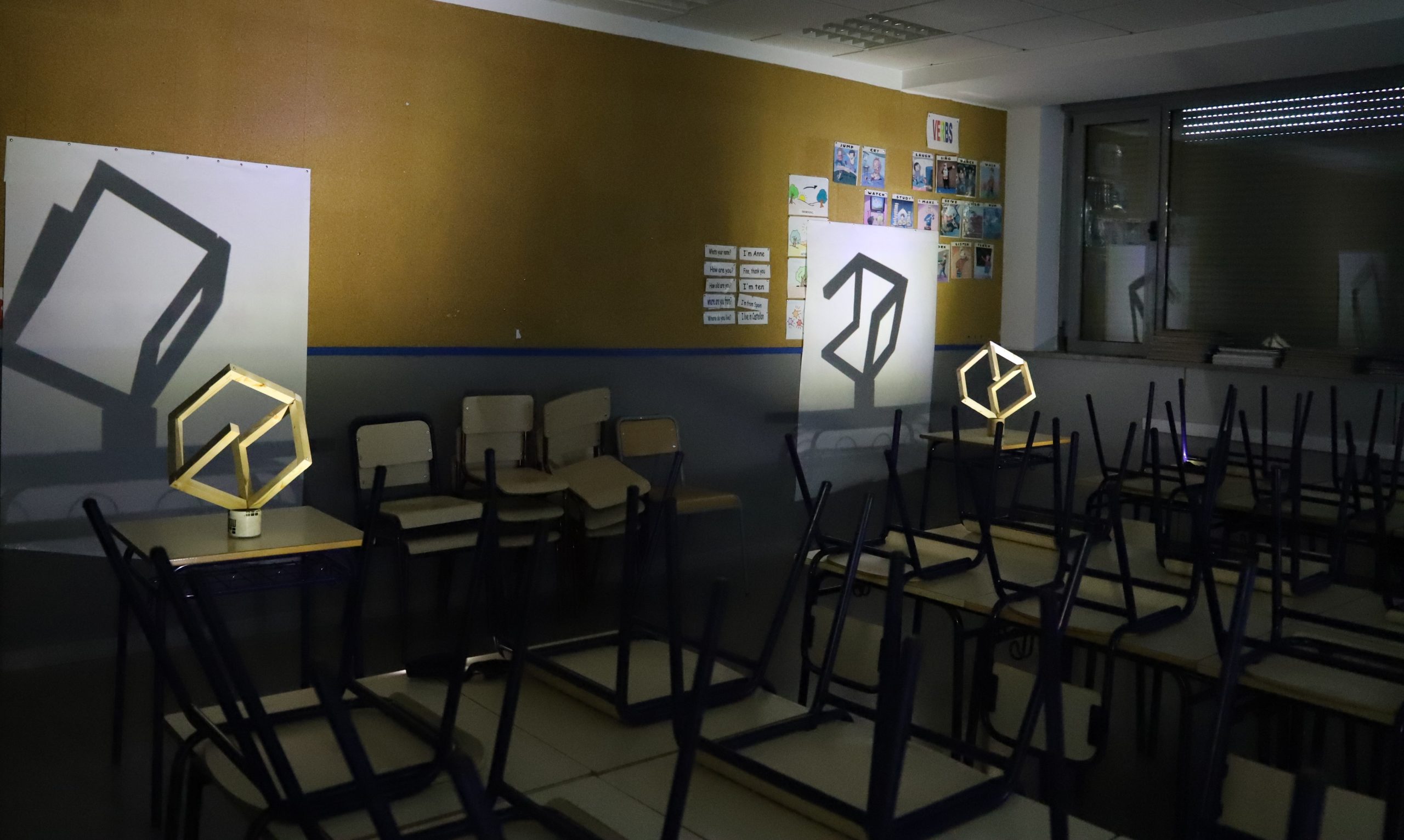Based on Lukas Ulmi's work, Cubs formats, Políptic I (Consorci de Museus, 2021, p. 373). Lukas Ulmi's sculptural game with perspectives allows to work with students on the importance of viewpoint and the transition between two-dimensionality and three-dimensionality. The play of light and shadows initiates the proposal in the classroom, generating immediate interest. It creates a rich linguistic context that fosters reflection and oral skills in students during sensory and aesthetic experimentation.


Three experimentation stations are prepared to avoid overcrowding, each of them equipped with the described materials.
A table is placed between the focus and the screen, so that the shadow of the object placed on the table is projected on the screen.
Students will be organized into groups, where there will be different roles.
This is a generic description of the proposal, which can be adapted to different levels, according to the grade and characteristics of the class. The described phases are divided into several sessions (usually between two and three). In the following section (What do we work on with this piece?), you have a detailed list of the proposal’s connections with the basic competences of Arts Education (AE), English, and CLIL methodology.
At this initial moment, the work and the author are contextualised, linking them with students’ previous knowledge and experience. Furthermore, comprehension is the main language skill involved, though the teacher always seeks interaction with the students.
At this point, students are encouraged to detect, understand and, if possible, extract the aesthetic qualities of the work that will serve as a guide for experimentation (see Aesthetic Qualities of Cubs formats, Políptic I). It is a rich context for language learning as it is linked to reflective analysis of visual language.
Totes les fotografies seleccionades per cada grup s’exposen, juntament amb les tires plegades d’acetat, en un lloc visible de l’aula o de l’escola. Es crea així una peça col·laborativa a través de l’acumulació. Es mostra també la peça Cubs formats, generant un diàleg visual entre les dues propostes. La mestra raona amb l’alumnat per arribar a una reflexió avaluativa, que recull de nou els criteris i enllaça amb la peça de Lukas Ulmi.
The work of each proposal is competency-based but materializes through specific aspects inspired by the original piece. Specifically, Lukas Ulmi's Cubs formats leads us to focus on: its sculptural quality and, therefore, the work with volume; the importance of point of view, which modifies the shape; the deconstruction of a geometric form (the cube); the transition between two-dimensionality (photography) and three-dimensionality (original sculpture and with acetate). Click the button to download a more detailed description of how to link the proposal with specific AE competencies.
The proposal aims to make a contextualized use of language, fostering the development of language skills. This is carried out through a communicative approach highlighting action-oriented learning in which the exchange of artistic and linguistic codes is encouraged.
Within this competency-based work, each step of the proposal constitutes one or several communication situations that act as a meaningful context for the use of more specific knowledge, which each teacher can select according to his/her objectives. Among others, the characteristics of the original piece and the derived proposal can be suitable to work on expression of indications and instructions, expression of belonging, asking and answering, and expression of preferences.
Click the button to download a more detailed description of how to link the proposal with specific foreign language competencies.
The CLIL approach was conceived to be applicable in any area of knowledge, but each area has well-defined characteristics. One of the objectives of this project has been to identify the specificities of AE that, on the one hand, can strengthen the CLIL approach and, on the other hand, can benefit from applying this approach. The work among teachers, researchers, and students has allowed us to design a CLIL proposal specific to AE. Click the button to download it.

CONTACT
artsenguji@gmail.com